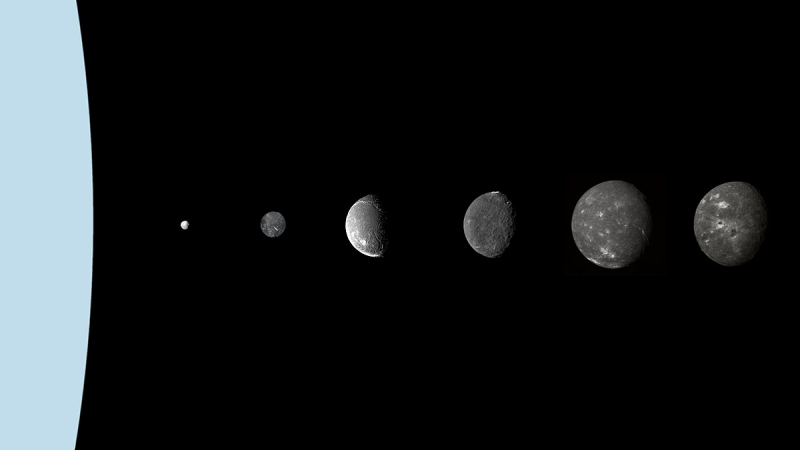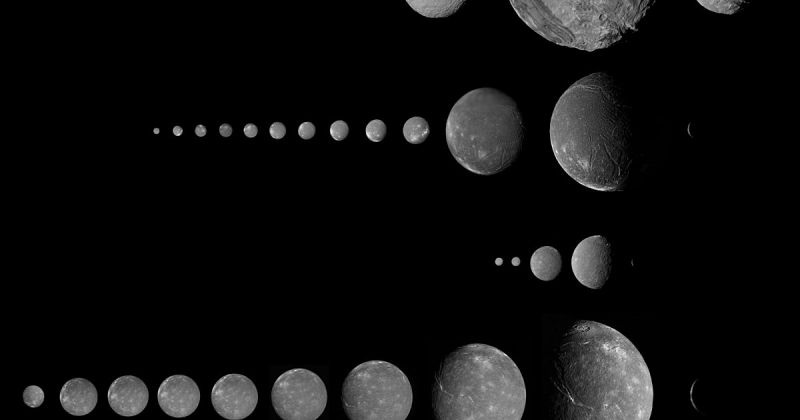Uranus Has 27 Moons

There are moons on Uranus, much like on the other large planets. One of the interesting facts about Uranus is there are now 27 moons known to exist, according to astronomers. These moons are typically small and erratic, though. Even if you added up all of their masses, Triton, Neptune's largest moon, would still have a mass that is less than half that. While Triton is thought to have been captured, the larger moons of Uranus are all thought to have formed from an accretion disk that ringed the planet.
The biggest moons of Uranus are Titania, Miranda, Ariel, Umbriel, and Miranda in order of size. Miranda's diameter and mass are 472 km and 6.7 1019 kg, while Titania's are 1578 km and 3.5 1021 kg. These moons all have low bond and geometric albedos, making them all exceptionally dark. The most brilliant is Ariel, while the darkest is Umbriel.
Each one is made of nearly equally of rock and ice, with Miranda being mostly built of ice that may also contain ammonia and carbon dioxide. The rocky material is thought to be constructed of carbonaceous material. They are thought to have distinct compositions, with an icy mantle enclosing a rocky core. It is thought that oceans with liquid water may occur near the core/mantle border in the cases of Titania and Oberon.
The remaining moons of Uranus are all connected to the planet's ring system, which is thought to have formed when one or more small inner moons broke apart. These moons are either located within Miranda's orbit or extend beyond Oberon. They are all made of ices that have been tainted with a dark substance, which is probably an organic molecule that has been darkened by UV ray exposure.








